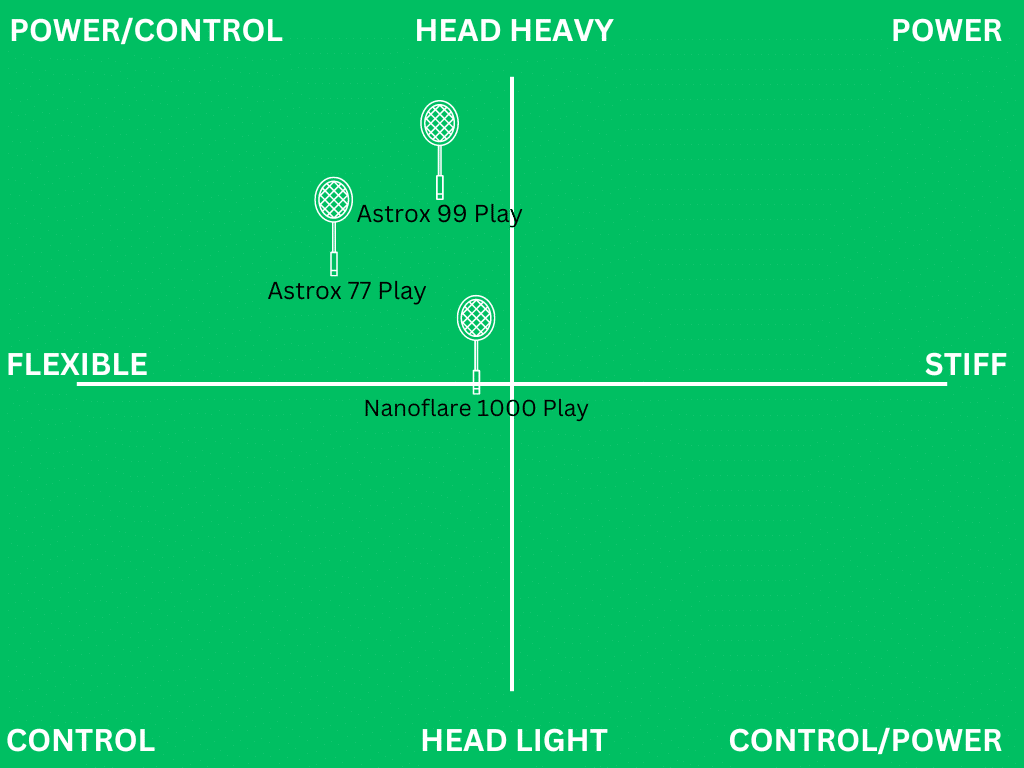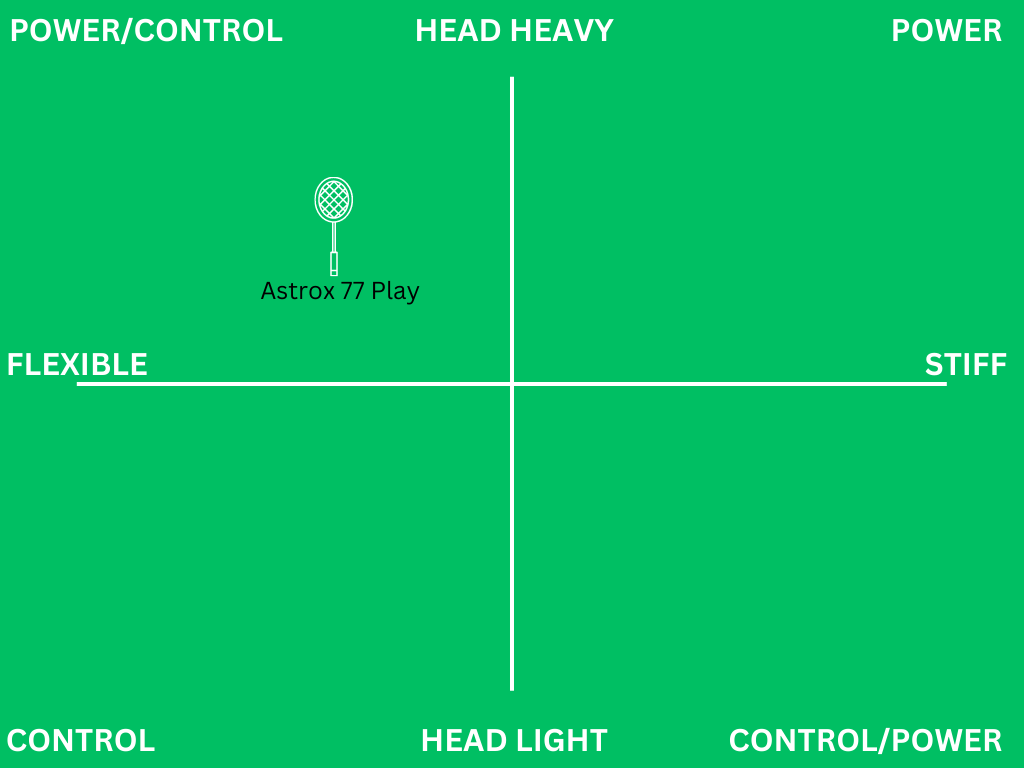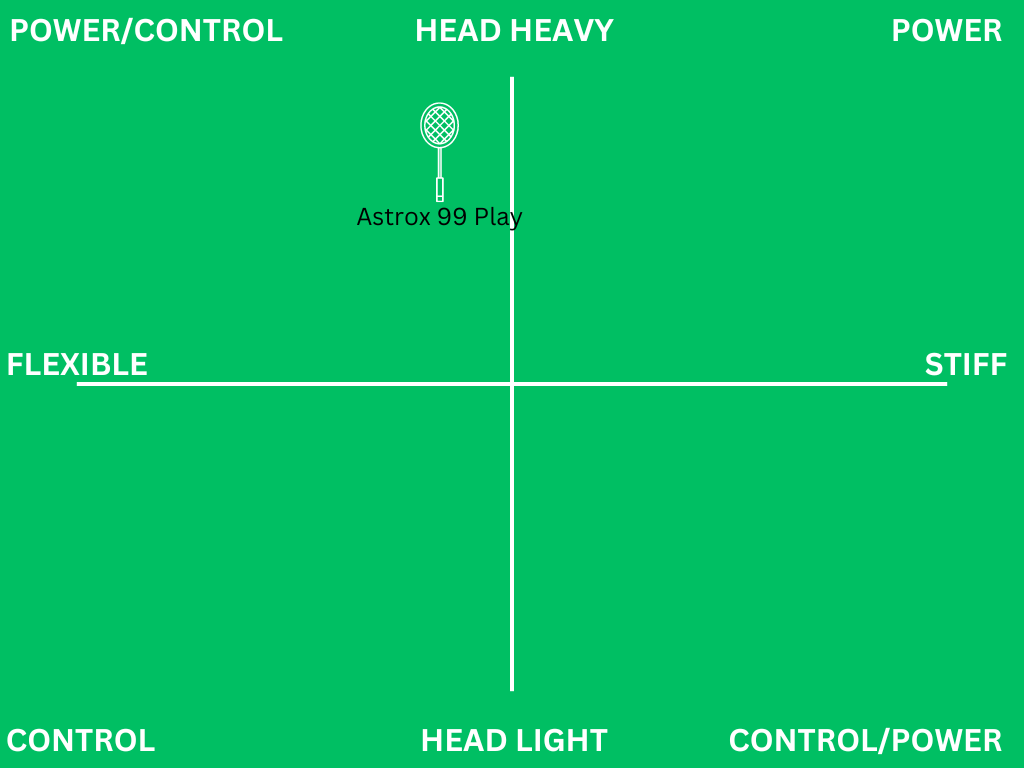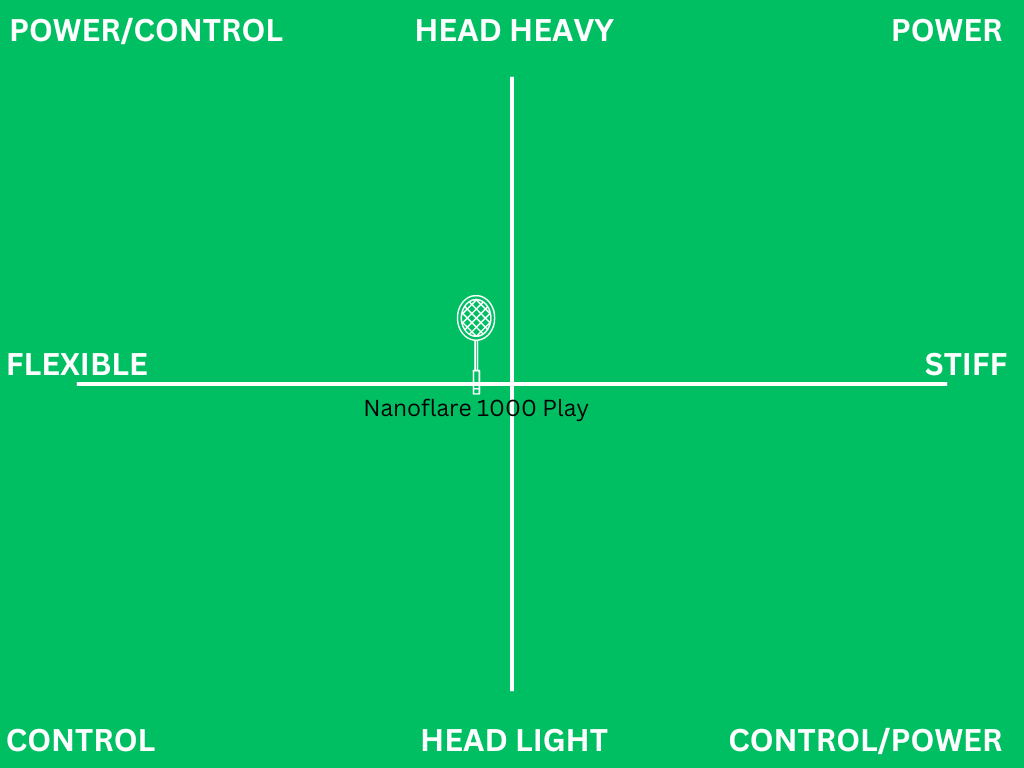Let me begin with a counterintuitive point when looking for the best badminton rackets for beginners.
Before you develop hyper-focused and detailed workouts. Before you start thinking about entering national tournaments. Before you know your preferred playing style.
Before all that, you need a racket that matches your level and helps you have fun. That sounds like something out of a marketing department, but you’ll see a real difference in the power and ability to send good shots over the net by using a racket built for your level. In this guide, I’ll show you how to find the best badminton rackets for beginners even if you’re not a racket-geek and just want something that looks as fresh as Jake in Brooklyn Nine-Nine!

As we dive into each of the rackets, I’ll show you some performance metrics so you’ll get a sense of how they are different, but feel free to skip that if you don’t care (I won’t tell anyone).
But before we do, let me share one simple metric you can use to recognize the rackets that are relevant for beginners when you’re browsing the racket jungle.
How do I choose a good badminton racket as a beginner?
The world’s producers of badminton rackets have less than ideal information about their products.
You enter a jungle of styles, brands, and designs, but generally, you want to find a racket that’s rewarding when you do well and (only) moderately punishing when you mess up.
It should be a racket that gives you an extra edge and not something you might find in a shed at a beach house with the precision of a drunk driver and the weight of a sledgehammer.
To cut through the brush of this jungle and find that balance of a good beginner badminton racket that’s fun to play with and nudges you to get better, you need to consider the following:
- Technique
- Racket difficulty
- Your assumption of being able to exploit intricate design differences in top-quality rackets (hint: you won’t)
- A few important racket factors
Let’s get something straight. All beginners lack technique (in all areas).
I’m not saying this to get you down. It’s just to say you need to keep in mind that there is no substitute for training if you want to get better – no racket will ever change that for you.
However, a racket that fits your level can make things a lot more fun, and this is where you can really start to narrow your options down.
One massive influence on racket difficulty
Right away, you should eliminate 80% of rackets — they are a waste of your time because they’re out of your league.
I have a simple method to trim it down that you can use anywhere, and it works whether you shop online or go down to your local badminton store.
I focus on just one factor: racket flexibility.
My best advice is to stay away from stiff rackets or even those that are in the medium range.
The problem beginners have with rackets that aren’t very flexible is that they make it much harder to generate power.
At the same time, stiffer rackets focus more on the control aspect of the game (you’ll want to focus on this when you get better), and they generally require a higher skill level and consistent technique to strike good shots.
On the other hand, more flexible rackets offer you a power boost to strike fast shuttles even when you don’t hit them with the optimal angle and timing.
As a beginner, your technique simply won’t be good enough to manage stiffer rackets or tap into the control benefits they offer.
The big takeaway is that you’ll be fighting an uphill battle with little success in your game if your racket is too advanced.
With this factor, we can create a racket matrix that paired with attacking rackets (head heavy weight balance) or defensive rackets (head light), makes it easy to see how beginner rackets compare.

The highlighted area is where you’ll find a good beginner badminton racket. You’ll notice how this instantly eliminates all rackets that aren’t highly flexible.
Most producers will rank their rackets on a similar scale of flexibility, so you can easily filter for this criteria. Keep in mind that this is a simplified explanation as each racket brand sometimes categorizes them slightly differently depending on how they measure it.
You might not realize it now, but this saves you a lot of time (and potentially money) when deciding on a racket.
With that simple technique, it’s time to look at some rackets. You and I will look at power rackets, good-looking rackets, all-arounders, and options if you get tired fast.
For any racket you get, I recommend getting it restrung as most rackets come with weak strings and at low tension.
Let’s dive in.
Hey fellow beasty badminton player, I include links to buy the gear I review and if you do, the store pays me a small commission. That doesn’t change your price and you’ll get more play-tested gear as a result but I thought it was fair to let you know. As an Amazon Associate, I earn from qualifying purchases. I appreciate your support, Aske
Overview: the 3 best badminton rackets for beginners
1. The best if you want power and smash (for first timers): Yonex Astrox 77 Play
2. The best if you want power and smash (for experienced beginners): Yonex Astrox 99 Play
3. The “I-get-tired-really-fast” racket: Yonex Nanoflare 1000 Play
Table of Contents
Deep dive: the best badminton rackets for beginners
If you’d like to compare the rackets overall, here’s a simple racket matrix that shows how the rackets compare based on two performance metrics: flexibility and head heaviness.

1. The best if you want power and smash (for entry-level players): Yonex Astrox 77 Play

In terms of getting the best badminton racket for beginners when it comes to smash I’m suggesting two options. I find that the Astrox 77 Play is more suitable for entry level players and players new to the sport, whereas the Astrox 99 Play below is better suited for beginners with some experience in timing their shots.
The Yonex Astrox 77 Play is a great all-around racket with a bit of head weight to support you during hammer time.
It’s less powerful than the Astrox 99 Play but easier to use and strong all-around the court, even on softer shots near the net. For beginner players, it falls right in between being an all-around racket and a heavy smash machine so you get the best of both worlds, which makes it easy to play with without a lot of experience.
If you’re interested in more details, I’ve reviewed this racket in detail and found it a great choice for beginners who like smashing, especially due to its low price point.
Key Specs
- Weight Class & Grip Size: 4U / G5, 6
- Balance Point: Head Heavy
- Flexibility: Flexible
2. The best if you want power and smash (for experienced beginners): Yonex Astrox 99 Play

The Yonex Astrox 99 Play is a powerful beast and likely the most powerful racket you’ll come across as a beginner.
Compared to stiffer rackets, like the Astrox 100 Game for intermediate players, it feels slower and more like a sledgehammer as is expected with this style of racket and price point. Nothing crazy though, and it’s still suitable for doubles if you like a powerful shot.
It’s a tad stiffer than the Astrox 77 Play above, which means it’s not great for entry-level players but rather for “advanced” beginners who have played for a while as it requires some experience timing your shots.
The downside with a power racket like this one is that it’ll be hard to control soft shots near the net due to its power.
I found that I had trouble keeping the shuttle in the court due to the power unless I was far back on the court. The defensive side of drive duels felt slightly impaired due to the slower and heavier nature of the Astrox 99 Play but it was easy to send it back over the net with power.
Overall, this racket is one-sided but great value for money and offers loads of fun as a beginner. You’ll find the full Yonex Astrox 99 Play review here.
Key Specs
- Weight Class & Grip Size: 4U / G5, 6
- Balance Point: Head Heavy
- Flexibility: Flexible
3. The “I-get-tired-really-fast” racket: Yonex Nanoflare 1000 Play

The flagship Nanoflare 1000Z recently set the Guinness World record for the fastest smash. This is clearly a marketing stunt as we don’t see it compared to the smash of any other racket, but nonetheless, it’s an exciting racket.
That one is also far too demanding for beginner players to use. I recently tested the intermediate edition of Nanoflare 1000 and I enjoyed playing with it enough that I believe the beginner-friend edition called Nanoflare 1000 Play will be fun for you too if you don’t want to get overly tired when playing. It isn’t 100% the same racket, but it’s close as this model has a more flexible shaft to help improve your shots among other things.
If you don’t play too often and want to feel less strained in your shoulder and forearm, this racket can certainly help you.
It’s head light which means it maneuvers faster through the air at the expense of making it easier to generate power (which will make you more tired, faster). During my test, I found that it produced more power than expected but it wasn’t crazy easy to extract like with the two other rackets in this guide.
If you’re playing doubles games, this will be a fun racket at the frontcourt while still being able to play clears and other rearcourt shots when you need to.
Key Specs
- Weight Class & Grip Size: 4U / G4
- Balance Point: Head light
- Flexibility: Flexible
The summary of beginner rackets

You’ll develop a lot as a beginner, so my advice is to think about what you find the most fun when playing badminton (i.e. which shot or part of the game) and think about how the best rackets can impact that, if at all.
Fun is the keyword here because you might be in a completely different mindset six months from now.
Maybe you’re good at hitting shuttles at your opponent that keep them on the defense and want some extra power to make your attacks even more deadly.
Maybe you’re very patient and like to extend rallies, test out a variety of shots, and want something that can help you out when you need to react quickly or change the pace.
Either way, these are simply preferences you need to decide on your own, and as long as you stay within the beginner range of the matrix, you won’t go completely wrong.
Frequently asked questions
The best way to choose a badminton racket for beginners is by looking for rackets that are highly flexible to help you if your technique and timing aren’t developed yet.
Other areas such as choosing a power-based, all-around, or fast racket come down to preferences as each one has its pros and cons.
2 comments
I went through a couple of blogs to choose what racket to buy as a beginner, and your blog is by far the easiest to understand to make a decision. Thanks a lot for putting together this amazing piece!
Thanks for the kind words, Tushti. I’m glad it helped